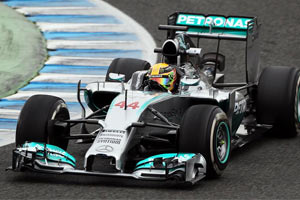It's quite simple really - design the wing so that the centre of pressure (the point through which the downforce acts) is in front of the mounting points and the wing will want to rotate nose down. Design it so that the centre of pressure is behind the mounting points and the wing will want to rotate nose up.bhall wrote:Maybe. I just don't understand how the wing can tilt forward under load. That seems counterintuitive to me. Then again, I've been wrong before...Just_a_fan wrote:I would expect that the mountings aren't far from a line running through the usual centre of pressure...
The front wings are complex and it's likely that the centre section wants to rotate nose down (because the teams seem to get the centre section to develop downforce even though it's supposed to be neutral); the outer sections likely want to rotate nose up. Tuning the resultant force to give your overall desired result will be key.



